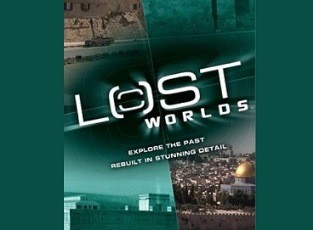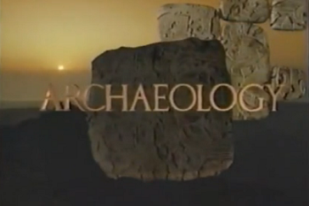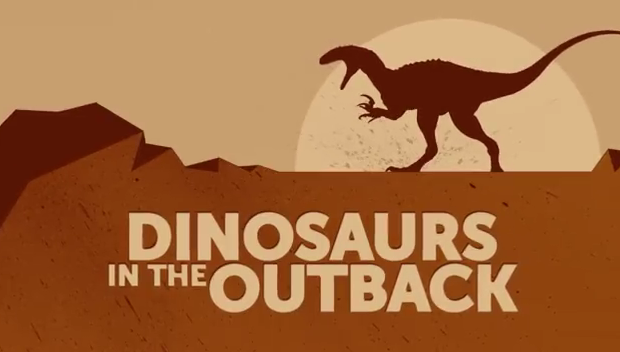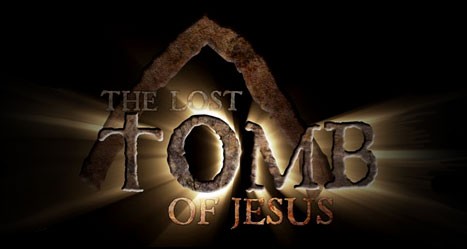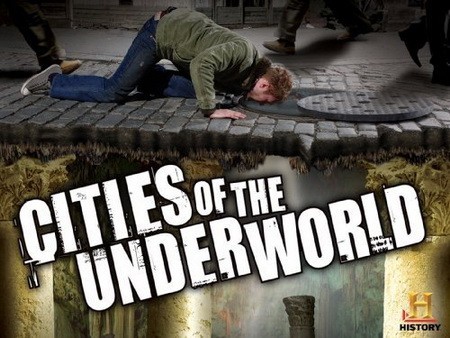br/>
John Rhys-Davies hosts this 1991 series that explores various archeological subjects and their link to stories of the past. The show explores the efforts of archaeologists and the methods they use to discover the answers to these mysteries. “Archaeology” brings the diversity of our human past to life with dramatic stories, new discoveries, and exciting explorations. This series won a Cable Ace Award for Best Science Series. Select episodes have been shown with the series title: Time Travellers. Rhys-Davies, who was raised in England, Africa and Wales, credits his early exposure to classic literature for his decision to pursue acting and writing. He graduated from the University of East Anglia and is probably best known to film audiences for his roles in the blockbuster hits Indiana Jones and the Raiders of the Lost Ark series.
The Fall of the Maya – Twenty-five years ago, the ancient Mayans were thought to be a mysterious and peaceful people governed by astronomer-priests. Today, researchers reveal stories of Mayan blood sacrifices as they uncover a world so foreign as to defy our understanding of it. also know as Breaking The Ancient Maya Code.
The Death March of De Soto – Romantic visions of the Explorer Hernando de Soto continue to celebrate the conquistador’s arrival in North America 450 years ago as one of the most important events in the history of mankind. But archaeology tells a darker story, a story of death and destruction from the Gulf Coast to the mouth of the Mississippi.
The Search for Neanderthal – In 1856, workmen in a cave in the Neander valley near Dussseldorf, Germany, unearthed a human skeleton. Its skull had a low, protruding brow, large teeth, and a massive bone structure. And from this discovery began a lengthy dispute: did the Neanderthal man represent an abnormal modern human? Or an extinct ancestor? They roamed Europe’s bleak grasslands braving cave bears mammoths and the freezing winters of the ice age and then they vanished. Their disappearance has stirred debate and speculation for over a century still the mistery lingers. Explore the prehistoric world of neanderthal. Imagine it is 100,000 years ago. An ice sheet 1 mile thick grinds over scandinavia and siberia. Most of europe is an endless expanse of praire with howling winds and stunted vegetation. In the sheltered valleys the neanderthals huddle up the cliffs and in cave mouths. Hunting some animals familiar today while facing others now extinct. The fiercesome cave bear, cave lion, giant bison and wooly mammoth. For untold generations the neanderthals had europe to themselves. Then a new modern type of human began developing and spreading from Africa. For centuries the neanderthals and moderns coexisted apparently in peace. Then the neanderthal vanished. Why did neanderthals as a group die out and why did modern humans become the only form of humans that around? We don’t have all the answers to that question, it is a difficult question to answer, but it is one in which we are starting to get a series of leads from research into the fossils and research into the archaeology, the debris that they left behind. Our fascination with this browed human has not dimmed in 150 years since he was discovered. Artists have given him his human face, physical anthropologists have tried to make him walk and talk again. The enduring question of his relationship to us remains. Did neanderthals and modern man coexist in peace or conflict. Did they go their separate ways, could they have inter-bread. The one thing clear from the archaeological record is the life of a neanderthal was not an easy one.
The Lost City of Zimbabwe – Rising out of the highlands of Sub-Saharan Africa are the ruins of the long-secluded, spectacular Great Zimbabwe. Dismissed by racist explorers as the work of some ancient black civilization and stripped by ignorance and prejudice of many of it’s priceless artifacts. Can archaeologists undo the years of preceding damage?
Unraveling Hitler’s Conspiracy – Here, for the first time, is the story of how archeology was used not only to manipulate information about the past, but also to legitimize the genocidal regime of the Nazis.
Secrets of the Little Bighorn – One of America’s most famous historical landmarks is The Little Bighorn, a site where Lt. Col. George Armstrong Custer and more than 250 troopers of the 7th US Calvary rode to their deaths on June 25, 1876. Though detailed facts of the event were unknown, the battle became shrouded in tales of myth and mystery that have endured for over a century. Until now.
Who Were the Israelites? – The tale of the Israelites’ conquest of the Promised Land has long been an article of faith wherever the Bible is widely read and respected. But recent discoveries suggest that the military defeat of the Promised Land, as detailed in the Book of Joshua, simply never occurred.
The Voyages of the Vikings – During the Middle Ages a powerful, seafaring people known as the Vikings came swarming out of the northlands in their long ships to burn and pillage their way across civilized Europe. But there was another sphere of them: It was the Vikings who completed the Atlantic crossing westward to colonize Greenland, and disembarked upon the eastern coast of North America at a site they called Vinland.
Caesar’s Nightmare: An Ambush in the Forest – In 9 AD, an arrogant Roman general, Publius Varus, anticipated that he would easily suppress several rebellious Germanic tribes, after which he could leisurely march his troops to their winter campsite. Unfortunately for Varus and three of Rome’s crack legions, he walked into an elaborate and well-organized ambush. Sweeping aside nearly 2,000 years of doubt and mystery, on-going excavations in Germany’s Teutoberg Forest have revealed the location of one of the bloodiest battles of antiquity. In 9 AD, an arrogant Roman general, Publius Varus, anticipated that he would easily suppress several rebellious Germanic tribes, after which he could leisurely march his troops to their winter campsite. Unfortunately for Varus and three of Rome’s crack legions, he walked into an elaborate and well-organized ambush.
The Ancients of North America – Southeastern Utah is one of the richest and least disturbed archaeological areas in the Southwest. In 1990, archaeologists in this region discovered a dry cave/rock shelter with human remains. Only a small piece of sandal was removed in order to obtain a date on the site. Amazingly, the date was revealed as 5,490 BC. Who were the peoples who first conquered North America’s southwest? New archaeological techniques are allowing us to delve further than ever into the history of these unique people and the sort of lives they led. However, what is the controversial history behind this Archeological practice?
A Quest for Gold – After a perilous Atlantic journey, Captain Frobisher arrived at a large bay in the remote Northeastern Arctic of the New World and decreed that he had discovered the entrance to the ‘Passage’. Frobisher also found layers of curious ore deposited along the coastline. The Englishman, unacquainted with this exotic but worthless mineral, somehow believed that he had discovered a hoard of gold.
Athens, Daughter of Egypt? – Was Cleopatra black? Was Socrates? Did Egyptian armies conquer ancient Greece, thus setting the cradle of Western civilization in motion? Is this wishful thinking on the part of historical revisionists…or is it a long-suppressed historical fact? Today, a number of researchers claim that scholars of the 18th and 19th centuries were racists who could not stand the idea that their beloved Greece had been made “impure” by African influence. Through on-location interviews at excavations in Egypt, the Middle East, and Greece, we will construct possible scenarios to answer the larger question: What influence did Egypt, and it’s Black inhabitants, have on the development of Greece?
The Myth of the Masada – Although almost twenty-five years have passed since the end of Israel’s most ambitious archaeological undertaking, the name of this site, Masada, still exerts romantic appeal. For many Israelites and visitors to Israel, the isolated, flat-topped rock in the Judean Desert remains the most visible symbol of the power and significance of modern archaeology. Although almost twenty-five years have passed since the end of Israel’s most ambitious archaeological undertaking, the name of this site, Masada, still exerts romantic appeal. For many Israelites and visitors to Israel, the isolated, flat-topped rock in the Judean Desert remains the most visible symbol of the power and significance of modern archaeology. Excavations at Masada from 1963 to 1965 revealed the magnificent fortress-palace of King Herod the Great of Judea (37 to 4 BC). These excavations also exposed tragic evidence of the unsuccessful attempt by Jewish rebels to prevent Masada’s capture by the Romans in 74 AD. Yet, in focusing almost entirely on the defenders, the modern archaeological explorers of Masada may have overlooked its true historical significance: Masada was the site of a brutally efficient, though cruelly successful, exercise in the techniques of Roman siege warfare. And even today, we are still uncertain of the central event in the Great Revolt: the mass suicide of the Jewish Zealots. Did 960 defenders submit willingly to executioners chosen from their own number by lot, preferring death to surrender? According to recent archaeological research, the story of the mass suicide on Masada was the product of the creative imagination of a Jewish historian who sought to impress his educated audience with a chronicle written in an acceptable literary style. Yet it may be that historical facts are only a small part of the great rock’s mystique. The tale of Masada remains such a meaningful parable for the modern, besieged state of Israel that it seems to have taken on a life of its own. And perhaps the discovery, preservation, and presentation of the mountain’s archaeological remains can reveal as much about modern Israel as they can about the country’s ancient history.


